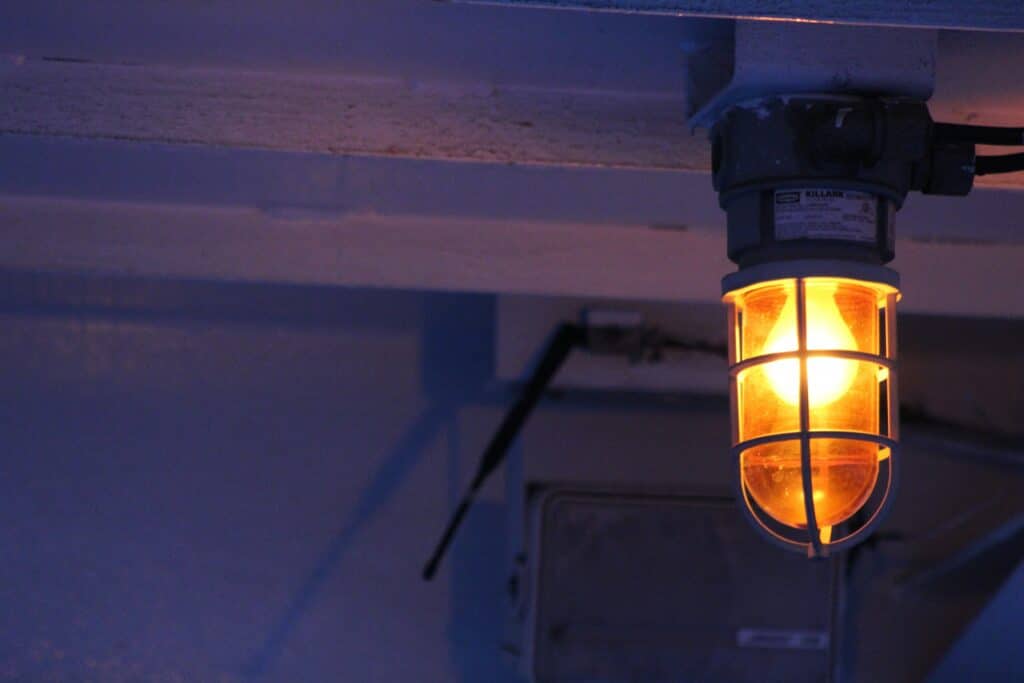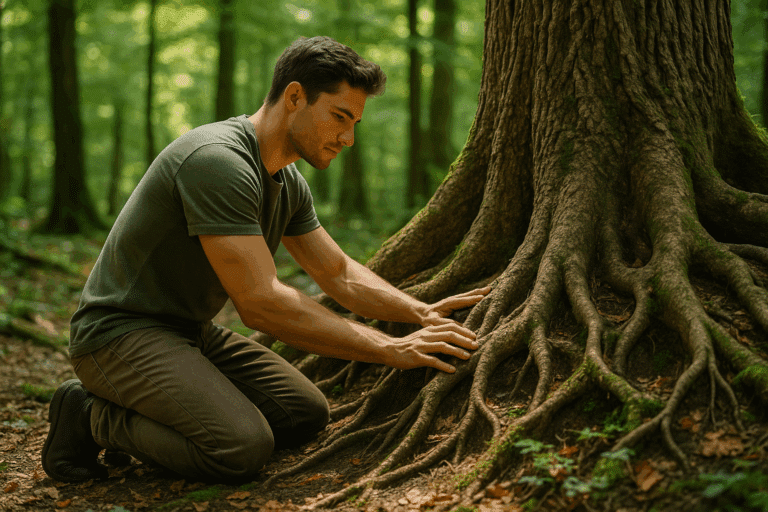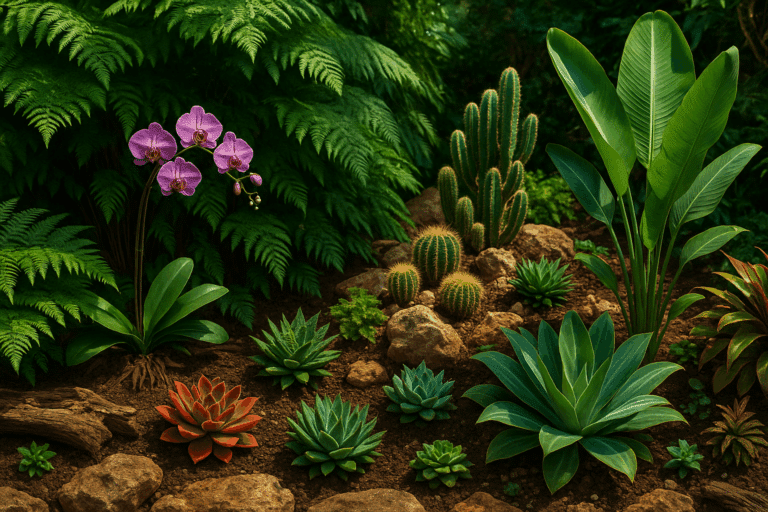Have you ever thought of using a plant that is not only ornamental but also thrives in low light conditions? If you’re grappling with these questions, it’s time to turn your attention to the Cast Iron Plant.
The Cast Iron Plant, or Aspidistra Elatior as it’s scientifically known, is the perfect indoor plant that not only enriches the aesthetics of your space but also thrives under minimal sunlight. In the forthcoming text, we will delve deeper into understanding this hardy plant, its low light requirements, and its overall care.

In the subsequent sections, we will be shedding light on the plant’s origin, its unique characteristics, and the reasons why it is often referred to as the ‘cast iron’ plant. We will also be discussing its compatibility with different interior environments, thereby helping you determine if it’s the right addition to your space.
Moreover, you will gain insights into the plant’s care guide – detailing everything from its watering needs, soil type, potting requirements, and more. This comprehensive guide aims to equip you with all the knowledge you need to add this versatile plant to your home or office, turning those dark, ignored corners into pleasing green spaces. So, buckle up as we embark on this enlightening journey with the Cast Iron Plant – truly a beacon in low light conditions!
Environmental Adaptability: Where the Cast Iron Plant Thrives
One of the most remarkable features of the Cast Iron Plant is its adaptability to a range of indoor environments. Whether placed in an entryway that receives little light, or used to fill a shadowy corner in a living room, this plant rarely complains. It is unfazed by fluctuations in temperature and can even tolerate occasional drafts or neglect. This robust constitution makes it a go-to option for frequent travelers, busy professionals, or those simply looking for a fuss-free greenery companion.
Aspidistra Elatior is not only suitable for indoor settings—it can also be used in shaded outdoor garden areas in warm climates. Gardeners in USDA zones 7 to 11 can successfully plant Cast Iron outdoors as a groundcover under trees or along shaded borders.
The Best Soil Mix and Potting Tips
For optimal growth, the Cast Iron Plant requires well-draining soil. A mix of standard potting soil with added peat moss, perlite, or bark helps improve aeration and drainage. While the plant can adapt to a variety of soil types, heavy, soggy soil should be avoided at all costs.
When potting, choose a container with adequate drainage holes. Terracotta pots are ideal, as they allow for better evaporation of excess moisture. Though slow-growing, the plant does benefit from being repotted every 2 to 3 years, especially if roots begin to circle the pot or growth noticeably slows down.
Humidity and Temperature Preferences
Unlike some tropical houseplants that require high humidity levels to thrive, the Cast Iron Plant is surprisingly tolerant of dry indoor air. It performs well in average household humidity levels, although occasional misting during extremely dry periods can be beneficial, especially in winter when heaters can strip moisture from the air.
In terms of temperature, the plant prefers a range between 60°F and 75°F. While it can tolerate brief dips in temperature, it’s best to avoid placing the plant near cold drafts or heating vents. Extreme conditions, such as prolonged exposure to temperatures below 45°F, may cause leaf damage.
Feeding Your Cast Iron Plant: Fertilizer Guidelines
Although the Cast Iron Plant is low-maintenance, periodic feeding helps sustain healthy foliage and supports steady growth. A balanced, water-soluble houseplant fertilizer (such as 10-10-10 or 20-20-20) can be applied once every 6–8 weeks during the growing season, typically from spring to early autumn.
Avoid over-fertilizing, as this can lead to leaf burn or diminished health. During the winter months, reduce feeding altogether to allow the plant to rest. Organic alternatives such as fish emulsion or worm castings can also be beneficial, providing slow-release nutrients in a gentle, natural way.
Cleaning and Leaf Care
To maintain the rich green sheen of the Cast Iron Plant’s foliage, it’s essential to keep the leaves clean and dust-free. Use a soft, damp cloth to gently wipe each leaf every couple of weeks. This not only enhances the plant’s appearance but also ensures it absorbs light efficiently.
Avoid using commercial leaf shine products, which may clog the pores of the leaves and impede respiration. For natural pest prevention and gentle cleaning, a diluted neem oil solution can be safely used.
Common Problems and Troubleshooting
Despite its hardy reputation, the Cast Iron Plant can experience a few issues when environmental conditions fall outside its comfort zone. Yellowing leaves are typically a sign of overwatering or poor drainage. To correct this, evaluate the watering schedule and consider improving the soil mix.
Brown leaf tips or edges often result from exposure to direct sunlight, low humidity, or excessive fertilizer salts. If this occurs, trim affected leaves with clean scissors and adjust care accordingly.
Another concern is drooping leaves, which can signal either underwatering or root disturbance. Letting the soil dry between watering is essential, but ensure it does not remain bone dry for too long.
Pest Management: Prevention and Solutions
Though naturally resistant to many common pests, the Cast Iron Plant can occasionally attract spider mites, mealybugs, or scale. To prevent infestations, inspect your plant regularly, especially the undersides of leaves and around the soil surface.
If pests are spotted, isolate the plant and treat it with insecticidal soap or neem oil. For mealybugs, dabbing the insects with a cotton swab dipped in rubbing alcohol often eliminates them effectively. Regularly cleaning leaves and avoiding overwatering can go a long way in preventing most infestations.
Styling with the Cast Iron Plant
Thanks to its bold foliage and upright growth habit, the Cast Iron Plant is highly decorative. It works well in minimalist interiors, traditional homes, and modern office spaces. The dark green leaves provide contrast against neutral walls or light furniture, adding a sense of depth and texture to the decor.
Pairing this plant with decorative planters, such as matte ceramic pots or woven baskets, enhances its aesthetic appeal. Whether placed on the floor, on a pedestal, or tucked into a plant shelf, the Cast Iron Plant serves as a timeless botanical feature.
Companion Planting Indoors
While many houseplants have specific humidity or lighting needs, the Cast Iron Plant’s flexible nature allows it to coexist harmoniously with a variety of other indoor plants. Consider grouping it with snake plants, ZZ plants, or pothos for a mixed display of low-light greenery.
By placing plants with similar care requirements together, you simplify maintenance while creating a lush, layered visual effect. This not only boosts aesthetic cohesion but also helps increase humidity levels naturally through transpiration.
Propagation and Sharing the Plant
Propagating a Cast Iron Plant is relatively straightforward but slow. The most common method is division, which is best done during repotting. Gently remove the plant from its container and separate the root clumps into smaller sections, ensuring each has at least two to three leaves.
Replant each division into a fresh pot with well-draining soil. Keep the new plants in a low-light, stable environment and water sparingly until new growth appears. Over time, these divisions will establish themselves and can be shared with friends, family, or used to expand your indoor jungle.
Long-Term Benefits and Sustainable Living
Incorporating Cast Iron Plants into your home aligns beautifully with sustainable living practices. Their durability and longevity mean fewer plant replacements over time, reducing waste and resource consumption. Moreover, their air-purifying qualities contribute to a cleaner, healthier indoor environment.
With minimal care, these plants can thrive for decades—some specimens are known to have lived for generations. Their enduring presence offers a connection to nature that grounds the space they inhabit and promotes long-term wellness.
Requirements for Optimal Growth
Light Conditions
In the wild, the Cast Iron Plant grows in deep shade. It can tolerate low light conditions and even artificial light, which makes it an excellent choice for spaces like offices or rooms with minimal natural light. However, if the plant gets too little light, its growth might slow down and the leaves might lose their lush green color.
Water and Soil Requirements
The Cast Iron Plant is drought-tolerant and does not require frequent watering. In fact, it is more likely to suffer from overwatering than underwatering. When it comes to soil, it prefers well-draining soil that is rich in organic matter.
Maintenance and Care for Cast Iron Plant
Pruning and Repotting
Pruning is not a necessity for the Cast Iron Plant. However, removing old or damaged leaves can help the plant direct its energy towards new growth. Repotting is recommended every few years to replenish the soil and give the plant more room to grow.
Pest and Disease Management
The Cast Iron Plant is resistant to most pests and diseases. Still, it is susceptible to common houseplant pests like spider mites and mealybugs. Regular inspection and early intervention can prevent serious infestations.
Bonus Tips for a Thriving Cast Iron Plant
- Although it can tolerate low light, the Cast Iron Plant prefers bright, indirect light. Avoid direct sunlight as it can scorch the leaves.
- Ensure the plant is in a well-draining pot to prevent waterlogging and root rot.
- Feed the plant with a balanced, slow-release fertilizer during the growing season for a nutrient boost.
Summary
In conclusion, the Cast Iron Plant is a versatile and hardy indoor plant that can thrive even in less-than-ideal conditions. With its low light requirements and tolerance for neglect, it’s an excellent choice for novice gardeners or those with a less-than-green thumb. Despite its toughness, a little care and attention can go a long way in ensuring a healthy and lush Cast Iron Plant.
Conclusion
The enduring popularity of the Cast Iron Plant lies not only in its ability to tolerate adversity but in how it invites a quiet sense of tranquility into your daily environment. As modern life becomes more complex and digitally driven, having a low-maintenance yet deeply rewarding companion plant becomes more than a decorative choice—it becomes an intentional lifestyle enhancement.
This plant, which asks for very little yet gives so much in return, teaches us the subtle art of patience. Watching it unfurl new leaves over time serves as a gentle reminder that growth, even in the darkest of places, is always possible. Whether you live in a sun-soaked loft or a dim city apartment, the Cast Iron Plant adapts, survives, and thrives—mirroring the quiet strength many aspire to embody in their own lives.
Its glossy, deep green leaves provide more than beauty. They serve as a canvas of texture and movement, offering contrast against modern interior materials such as wood, concrete, or metal. With its upright form and lush appearance, the Cast Iron Plant adds vertical interest without overpowering a room. Unlike more sprawling varieties, its architectural shape allows it to fill awkward spaces—beside furniture, in forgotten corners, or flanking entryways—bringing forgotten areas to life.
What also sets the Cast Iron Plant apart is its forgiving nature. Have you ever returned from a vacation and feared what might await you in your plant collection? The Cast Iron Plant greets you calmly. It tolerates missed waterings and does not demand daily attention. Unlike more temperamental species that droop or discolor after a few days of neglect, this plant seems to welcome you back with grace, carrying on with its quiet growth, undisturbed and unbothered.
For pet owners, families with children, or shared living spaces, safety is often a concern with houseplants. While some plants pose toxicity risks to pets or require frequent attention to avoid shedding or mess, the Cast Iron Plant maintains its composure. Its sturdy leaves rarely drop or break, making cleanup minimal. Moreover, while mild toxicity has been reported in rare cases with ingestion, it is generally considered to be a safer option when compared to other more hazardous indoor plants.
In professional spaces—such as offices, studios, or retail environments—the Cast Iron Plant also proves invaluable. In rooms with artificial lighting or inconsistent care routines, this plant provides a green solution without the added stress of complex upkeep. Its subdued elegance complements both contemporary and classic design styles, making it a versatile favorite among interior designers and plant stylists alike.
Its symbolism should not be overlooked either. Many cultures associate the Cast Iron Plant with endurance, quiet strength, and lasting prosperity. In feng shui practices, it is believed to anchor calm energy and promote stable growth. Bringing one into your space is not only a stylistic decision but potentially a meaningful gesture toward grounding your surroundings in peace and resilience.
As sustainability becomes an increasingly essential part of home design and lifestyle decisions, the Cast Iron Plant also fits seamlessly into this narrative. Unlike fast-growing, short-lived plants that require regular replacement, Aspidistra elatior is built for the long haul. With the proper pot, soil, and minimal inputs, it can be part of your home for decades. This longevity supports a mindful approach to consumption and reduces the environmental impact of frequently replacing decorative plants.
Choosing a Cast Iron Plant is choosing simplicity and elegance over the complicated and high-maintenance. It’s choosing function and beauty over flash. It’s an embrace of nature’s capacity to adapt and survive, even in the dimmest conditions. In this way, it mirrors our own journeys—quietly thriving, despite the odds.
If you’re looking to bring life to a forgotten hallway, add charm to a shaded study, or simply experience the joy of greenery without the stress of constant care, the Cast Iron Plant offers an ideal solution. It is a classic that continues to earn its place in both traditional and modern homes alike.
So give it a home, water it when needed, place it in a cozy shaded nook, and watch it do what it does best—endure, enrich, and elevate your space with quiet, steadfast beauty. Let the Cast Iron Plant be a daily reminder that even in the shadows, something beautiful can grow.



